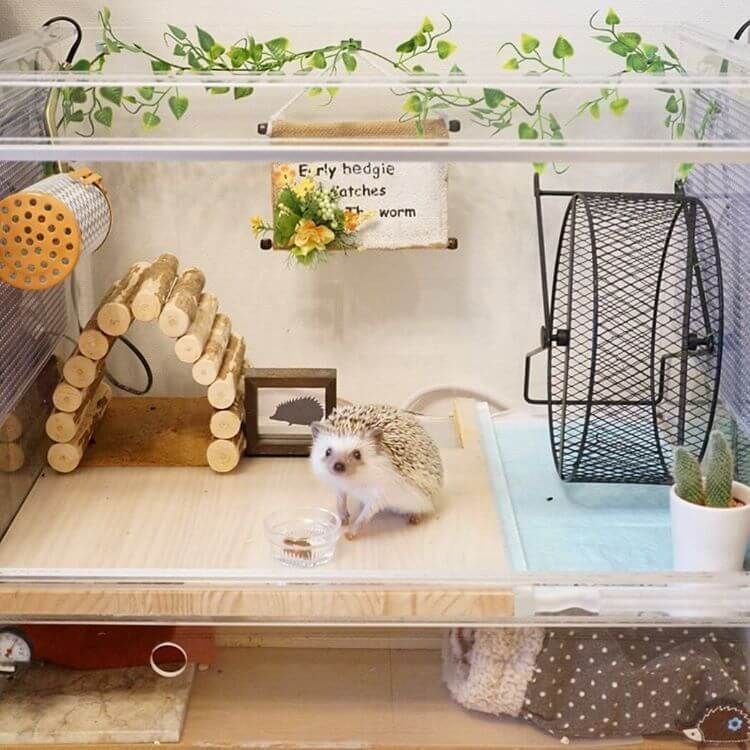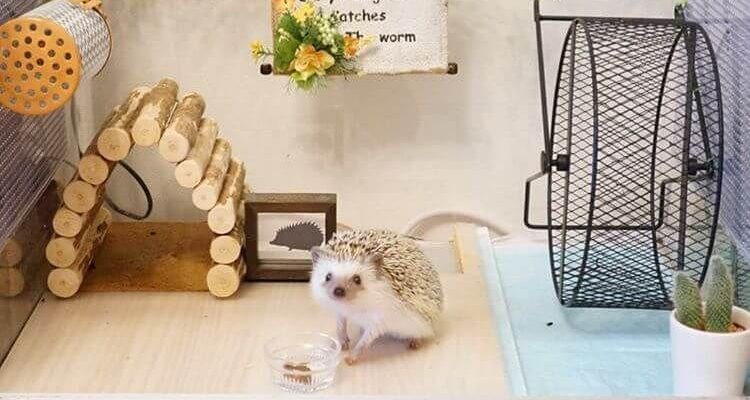
So, what goes into creating the best cage setup for a hedgehog? Well, it starts with choosing the right size cage. You might be surprised by how much space these small animals really need. After that, selecting the right bedding materials and toys is key to ensuring your hedgehog feels at home. Let’s dive into how to set things up just right!
Choosing the Right Cage Size
When it comes to the best cage setup for a hedgehog, size definitely matters. A cramped space can lead to stress and a host of health issues. Ideally, you want a cage that’s at least 24 inches by 48 inches. This gives your hedgehog enough room to roam and play. Cages designed for small animals, like ferrets or rabbits, can work well.
Where you place the cage is also important. Keep it in a quiet area of your home, away from heavy foot traffic or loud noises. Hedgies are naturally shy and need a peaceful environment to thrive. If you’re unsure about how much space your hedgehog needs, think of it this way: a larger cage allows for enrichment activities and gives them room to act on their natural instincts.
Keep in mind that multi-level cages can be a fun option too. They add vertical space, letting your hedgehog explore in different ways. Just be sure that any ramps or platforms are safe and easy to navigate.
Best Bedding Options
Now that you’ve settled on a nice big cage, let’s talk bedding. The right bedding can make your hedgehog feel snug and safe. You might wonder why it’s a big deal. Think of bedding like a comfy blanket for your pet.
One popular choice is aspen shavings. They’re absorbent, relatively dust-free, and allow for easy cleaning. However, steer clear of pine or cedar shavings, as they can release harmful oils that could irritate your hedgehog’s skin or respiratory system.
Another great option is paper-based bedding. It’s soft, highly absorbent, and hypoallergenic. Brands like Carefresh or Kaytee are well-reviewed for a reason! They’re easy to clean and don’t produce a lot of dust, which is a bonus for your hedgehog’s health.
Regardless of the material you choose, keep an eye on the bedding’s depth. About 1-2 inches is usually sufficient. This helps trap odors and provides a cozy area for burrowing, which hedgehogs love to do.
Creating a Cozy Nest
Every hedgehog needs a place to feel safe and secure. Enter the cozy nest! You can help your hedgehog create this little hideaway with a few simple items. Start by offering a small hide box or hut. It could be made of wood, plastic, or even fabric. Just make sure it’s chew-proof and easy to clean.
Inside the hide box, you can place some soft bedding material. Shredded paper or fleece works great here. Just like us, hedgehogs enjoy snuggling into warm, soft spaces. Let’s face it—who wouldn’t want their very own soft spot to curl up in?
Also, consider adding some blankets or towels for extra comfort. Change them regularly to keep things fresh. You want your hedgehog to feel like they’re in a safe little cocoon.
Essential Toys for Hedgehogs
Toys are crucial for keeping your hedgehog entertained and engaged. After all, a bored hedgehog can become a stressed hedgehog. Look for toys that cater to their natural instincts. Wheeled toys are a favorite among hedgehogs. A solid surface wheel can provide hours of exercise and fun.
Consider adding tunnels and hide spots for your hedgehog to explore. They love to hide and dart through small spaces. You could also include some soft balls or crinkly toys. Just remember not to overwhelm them with too many options at once.
You might also want to rotate the toys regularly. This keeps things fresh and interesting for your little buddy. Just like us, they can get bored with the same old toys day in and day out.
Maintaining a Clean Environment
Here’s the thing: a clean environment is key to keeping your hedgehog healthy and happy. Regular cleaning not only keeps odors at bay but also prevents bacteria buildup. Make a habit of spot-cleaning daily. This means picking up any soiled bedding or uneaten food each day.
Every week, you’ll want to do a more thorough cleaning. Remove all bedding, wipe down surfaces, and clean the toys. If you’re using paper-based bedding, it’s quite easy to just replace it when it gets dirty. Just be sure to wash any fabric items in hot water to kill any pesky bacteria.
Also, don’t forget to check the water bottle or bowl regularly. Fresh and clean water is a must. You wouldn’t want to drink from a dirty cup, right? Neither would your hedgehog!
Environmental Needs: Temperature and Lighting
Another important aspect of setting up the best cage for your hedgehog is managing their environmental conditions. Hedgehogs thrive in temperatures between 72°F and 80°F. If your home tends to get a bit chilly, you might need a heat source like a heat lamp or a heat pad. Just ensure it’s safe and doesn’t create hotspots.
As for lighting, hedgehogs are nocturnal. This means they’re active at night and prefer dim lighting during the day. Avoid placing the cage in direct sunlight, and consider using a nightlight if you want to check on them during their active hours.
Setting Up a Play Area Outside the Cage
Finally, it’s essential to give your hedgehog some time outside their cage. Setting up a safe play area can be a big hit. Use an enclosed space, like a playpen, where they can explore under supervision. Make sure there are no hazardous items around, and keep the floor surface soft.
During playtime, you can introduce new toys or tunnels. It’s a great way for them to exercise and interact with you. Just keep an eye on them, as hedgehogs can be quite quick and curious!
In conclusion, setting up the best cage for your hedgehog is all about creating a safe and cozy environment. From choosing the right size cage and bedding to selecting toys and maintaining cleanliness, each part plays a crucial role in your hedgehog’s well-being. With a little effort and care, you can create a vibrant home that keeps your spiky friend happy and healthy. Happy hedgehog parenting!

